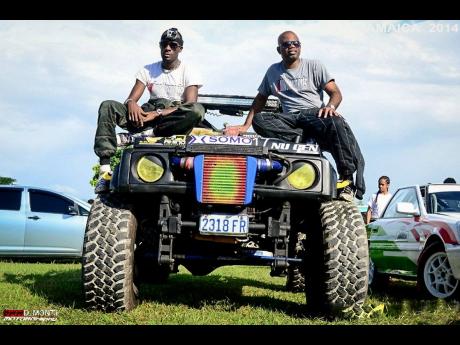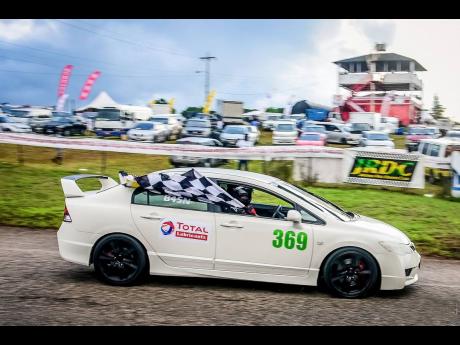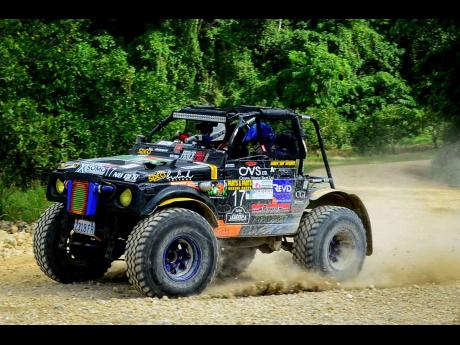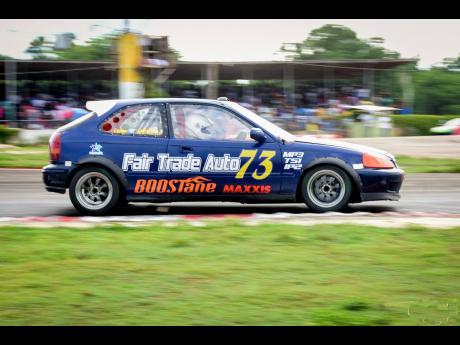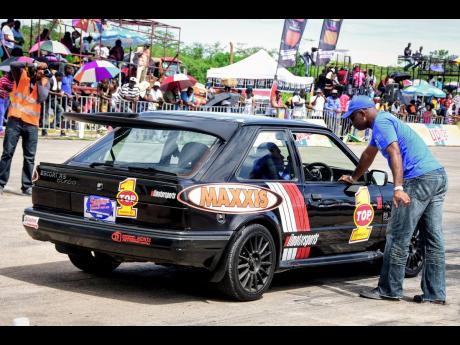Leroy ‘Ice’ Spence’s journey in the motor racing fraternity
Leroy ‘Ice’ Spence is a veteran drag racer, circuit racer, and rally navigator who got into racing due to a childhood interest in watching the sport on television. “I didn’t have any direct contact in motorsport at the time as no one around me was even involved in the circle to be able to get me into that fraternity.”
It was not until Spence was 18 years old that he bought his first vehicle, a 1998 Suzuki Forsa, which was a rally car. “It had been converted for road use, but it still had in the roll cage and other racing modifications like the suspension and exhaust. Also, the back seats were replaced with normal road seats.
Through this investment, he inherited a few contacts who were racers because the individual he bought the car from had connections with the racing fraternity. “He allowed me to have an opportunity to visit a few racing events, and as a spectator, I was able to grow that interest I had from childhood as well as consider the prospect of actually participating in the sport.”
In 2003, he started his participation in formal and official drag racin because at an early stage, he discovered that he could shift a manual-transmission vehicle very well. So he used this performance edge to his advantage.
Then in 2004, Spence formed his first racing team with his friend Jason Bailey in an attempt to invite people who didn’t have a long-term history or heritage in motorsport. “We were first-generation racers, and we wanted people not in the circle to have an opportunity to get into the sport. In other words, dare to dream and for those who chose to dream, we would offer them the opportunity that we were not easily afforded at an early stage.”
His introduction to rally and circuit racing
Spence had three years of successful seasons of drag racing in which he was the champion or the runner-up champion. But on one occasion, while he was at the workshop of Dean Corrodus, he was invited to join in the campaign for a rally season. “I loved the sport of rally but never drove in a rally car, and I was very enthusiastic about accepting the invitation, so we teamed up on the Mountain Dew-sponsored Honda Civic Type R in 2006, where we managed a successful national driver championship campaign for that season.”
He continued, “So we were the championship-winning team in the country for that year, and that was my introduction to rallying as a navigator.”
Though it took a bit of getting used to, of all the genres of racing that he has experienced, rallying has been by far the most thrilling. “It’s the most fun someone can have in a motorcar. The key to rallying is to be just on the edge of control and getting to the finish line in the shortest amount of time.”
Spence’s introduction to circuit racing was through Christopher MacFarlane, who was the first coach for the class of street car racers. Through this programme, the mantra emerged, ‘Race at Dover, not on the road’. This was used as a bridge to get people who race on the road to come to the track, and receive training, in an environment conducive to this activity. “This represented an opportunity for me to transition into this genre of motor racing, and even though I loved drag racing, it wasn’t where my heart truly lay. I had more of an interest in turning corners than driving straight.”
It was also in 2006 that he did his first racing campaign at Dover as a racer in the Improve Production 45 programme (IP 45) street car class. “I had a year of success. Then I graduated into buying and entering my race car in 2007.”
During this period, he received training from his local racing idol, David Summerbell, and through this experience, he was inspired to improve his skill in the sport. “In 2008, I went to the United Kingdom and did formal driver training for the first time. I participated in my first high-performance driver programme presented by professionals in the UK.”
Coordinator of the Super Street Class
After these years of honing his craft, he took a break in 2010 and 2011 to study and also start a family. Then in 2015, he was asked to become the coordinator of the street class programme. “Monique Gibbs, who was the president of the Jamaica Race Drivers Club (JRDC) at the time and one of the first members of the racing syndicate team, asked me to join the JRDC because they needed someone to spearhead and continue the development of the IP45 programme.”
“So in 2016, I became the coordinator of the programme with the aim of accommodating individuals that did and didn’t have prior racing experience. It started from zero to build you up to be a competent racer,” he said.
When asked if he does motor racing full time, he shared that the “internal economy: of the sport doesn’t allow it to be anyone’s primary income. “Racing in Jamaica is a club-level hobby, where you can get additional benefits and pleasure. But drag racing is the one genre of motor racing in Jamaica that pays a price for winning.”
He continued: “All the work I do in terms of training and coaching is done on weekends, on the side. Initially, it was a volunteer effort that didn’t have any income, and in the early years, much of it was out of pocket. However, more recently, there is a small contribution by the participants, but it still is not a primary source of income, by any means, and I do not do it full time because it’s not sustainable at the level it’s at.”

